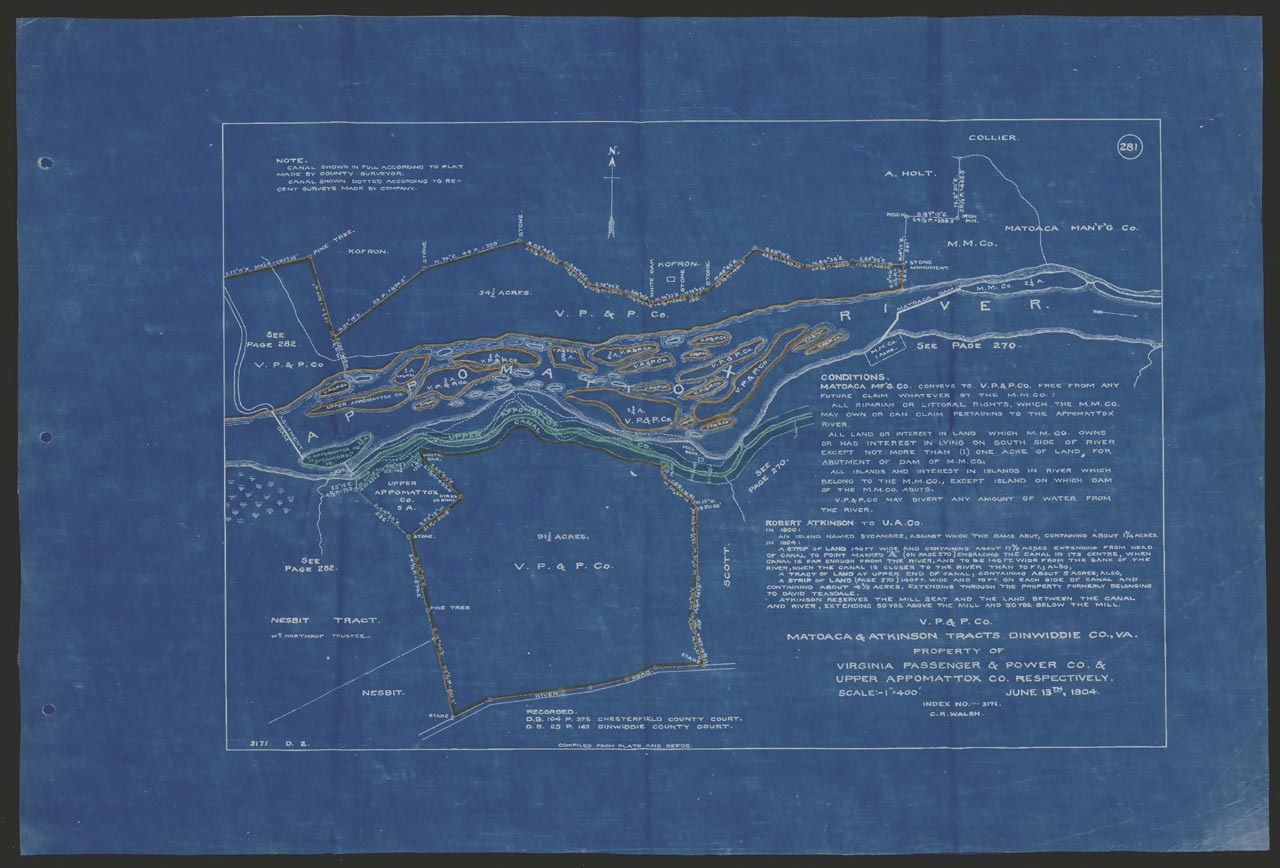The Library of Virginia is pleased to announce the completion of the Petersburg chancery causes digital project. The scanning project was funded by the Circuit Court Records Preservation Program along with a $155,071 grant from the National Endowment for the Humanities (NEH). The collection has been digitized from 1787 through 1912 and the images added to the Chancery Records Index. The most recently added suits cover the years 1889-1912.
The following are a few suits of interest found in the newly added Petersburg chancery digital images.
In chancery cause 1907-055, George E. Fisher, for, etc. vs. Virginia Passenger & Power Company, etc., the plaintiffs ask the court to take over the floundering Virginia Passenger & Power Company in order to protect their financial stake in the business. The suit contains numerous exhibits including plats (images 616, 2030, 2032), minutes from board of directors’ and stockholders’ meetings (images 1878 and 1673). In 1908-034, John F. Crowder, etc. vs. Eli Tartt, etc., the suit stems from the unhappiness of the First Baptist (Colored) Church members with their pastor Eli Tartt. The plaintiffs wanted the court to remove Tartt as pastor of the church and their bill of complaint gives an account of a church meeting that became so uncontrollable that local police had to be called in to restore order (image 7). Crowder, the custodian of the church records, also accused Tartt of breaking open an iron safe in order to steal the records of the church (image 10). The church constitution was used as an exhibit in the suit (image 18). Chancery cause 1911-025, Frank Roberts vs. Emma Grace Roberts, is a scandalous divorce case in which plaintiff Frank Roberts claimed that his wife was impregnated by a person other than him. A letter from Mrs. Roberts’ paramour, living in Idaho at the time, was referred to in a deposition (image 19) and used as an exhibit (image 21).
The Petersburg (Va.) Chancery Causes, 1787–1912, are a nationally significant archival collection. The collection consists of approximately 270,000 leaves and 3,900 individual cases. The records illuminate the lives of numerous under-documented populations through a host of primary sources such as depositions, bills of complaint, affidavits, wills, business records, correspondence, and photographs. These records are particularly significant to historians in three ways: they enable historians to study industrial and economic development in an urban area, and the extent to which such cities provided opportunities for upward mobility, especially to minorities, in the eighteenth century; they document the lives of free African Americans in the city with the largest population of freedmen in the Mid-Atlantic states prior to 1860; and they contribute significantly to existing and future scholarship in the humanities, especially in the areas of African American, women’s, and legal history, but also with great potential in the areas of labor, immigrant, economic, and social history.
-Sherri Bagley, Local Records Archivist

















